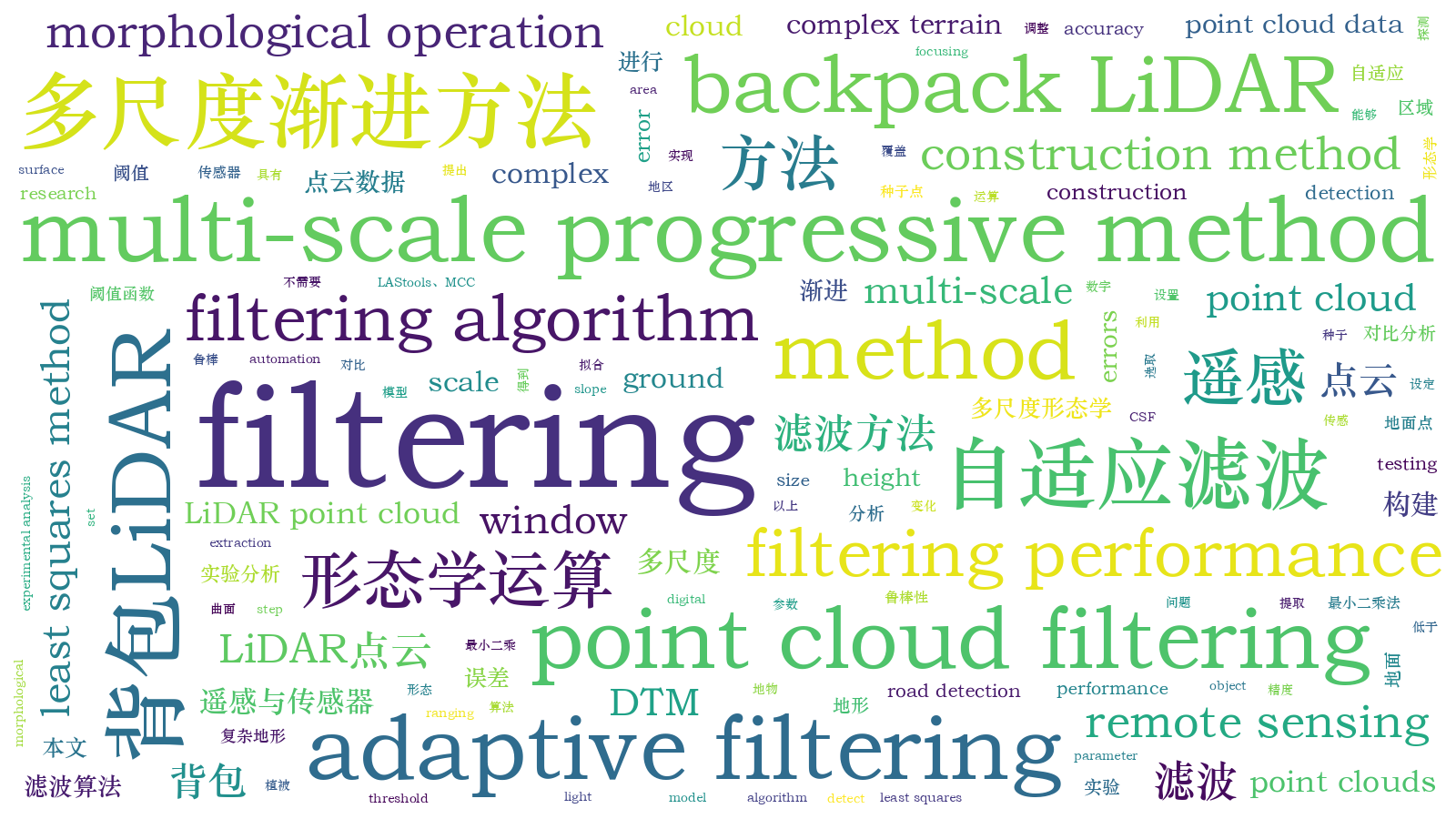基于背包LiDAR点云多尺度渐进DTM构建方法  下载: 593次
下载: 593次
Point cloud filtering is an important step for backpack light detection and ranging (LiDAR) technology to realize the digital terrain model (DTM) extraction, forest resource investigation, mountain road detection, etc. Although the existing filtering methods can achieve reliable filtering results in flat areas, there are still some unresolved difficulties and challenges in point cloud filtering research. First, there is not much research focusing on backpack LiDAR point cloud filtering, and the existing filtering methods cannot obtain satisfactory filtering results in the complex mountainous areas. Second, the existing filtering methods often require complex parameter adjustments to obtain optimal filtering accuracy, and the degree of automation of the existing filtering methods is low. Third, the existing filtering methods cannot effectively detect the terrain details, which leads to low accuracy. To solve all the problems mentioned above, this study proposed a multi-scale progressive DTM (MPD) construction method based on backpack LiDAR point cloud filtering.
This study presents a multi-scale progressive DTM construction method based on backpack LiDAR point clouds. The flowchart of the proposed method is shown in Fig. 1. In general, the proposed method is a multi-scale progressive method. The filtering window changes from the largest to the smallest. Note that the largest filtering window in the proposed method should be larger than the largest size of the object in the testing area. First, the lowest points under the filtering window are selected as the ground seed points. Then, the least squares method is applied to fit the DTM surface (DDTM_LS) using the ground seed points. In each scale, DDTM represents the DTM generated by filtering the ground seed points. Subsequently, the difference between DDTM_LS and DDTM is calculated, which is followed by the morphological opening operation; these results are then compared with the filtering thresholds to remove the nonground points under each filtering window. Notably, the filtering thresholds are adaptively changing in relation to the different filtering window sizes. When the filtering window size is small, the constructed DDTM is more accurate. Finally, an accurately constructed DDTM is obtained. To acquire the final ground points, the height difference threshold Sth is set adaptively with the terrain undulation, and the difference between the actual height value of the point cloud data and the corresponding fitted height value (calculated by the DDTM) is calculated. The points with height differences lower than Sth are labeled as ground points.
This study uses four backpack LiDAR datasets located in complex terrain areas for experimental analysis. The experimental results show that the average type I and type II errors of the proposed method are 13.23% and 6.11%, respectively. Meanwhile, the average total error is 7.88%, and the average Kappa coefficient is 79.48%. These calculated results are tabulated in Table 1. To verify the performance of the proposed method, three traditional filtering methods, including LAStools, MCC, and CSF, were also used for comparison. The comparison results are shown in Table 2. The average total errors of LAStools, MCC, and CSF are 16.03%, 13.67%, and 15.72%, respectively. The average Kappa coefficients of LAStools, MCC, and CSF are 45.30%, 55.90%, and 47.75%, respectively. Obviously, the proposed method performs much better than the other three filtering methods. The average total errors and Kappa coefficients comparison are shown in Figs.5 and 6.
The experimental results show that the proposed multi-scale progressive DTM construction method can effectively realize the filtering in complex terrain environments. The proposed method is less affected by terrain changes and can effectively protect terrain details in areas where the slope of the terrain changes drastically. Four backpack LiDAR point clouds in complex terrain areas are used for testing. The average total error of the filtering algorithm in this study is 7.88%, while the average Kappa coefficient is 79.48%. When compared with the three other filtering methods, namely LAStools, MCC, and CSF, the average total error of the proposed method is the lowest, while the average Kappa coefficient is the highest. Thus, it can be concluded that the proposed method can obtain better filtering performance for different terrain environments.
惠振阳, 李娜, 胡海瑛, 李卓宣. 基于背包LiDAR点云多尺度渐进DTM构建方法[J]. 中国激光, 2022, 49(4): 0410001. Zhenyang Hui, Na Li, Haiying Hu, Zhuoxuan Li. Multi-Scale Progressive Digital Terrain Model Construction Method Based on Backpack LiDAR Point Cloud[J]. Chinese Journal of Lasers, 2022, 49(4): 0410001.







